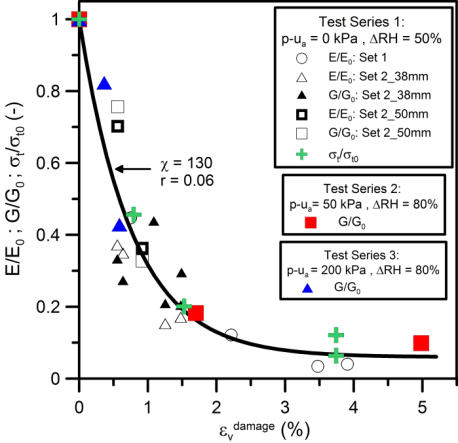Centre for Geotechnical Science and Engineering

Mechanics of Hard Soils and Soft Rocks
Key Researchers: Jubert Pineda, Antonio Gens (UPC Spain) (International Collaborator)
PROBLEM DESCRIPTION
Hard soils and soft rocks (HSSR) are transitional materials, in the sense that their engineering properties may be altered drastically when they are subjected to environmental (weathering) effects. They are found worldwide and typical examples include mudstones, claystones, shales, tuffs and stiff clays. These materials are responsible for a number of engineering challenges due to the fact that their strength, stiffness and volume can change substantially when they are subjected to environmental actions such as stress relief, cyclic wetting and drying, and thermal variations. These phenomena are known to have a detrimental effect on the behaviour of clayey rocks, leading to instabilities of earthworks or infrastructure.
SCIENTIFIC AND ENGINEERING APPROACHES
The study of physical and chemical degradation of HSSR requires monitoring and/or control of additional variables during laboratory tests, including relative humidity or suction, osmotic potential and cation exchange. This project focusses on:
- Developing novel experimental devices for inducing and tracking degradation of natural and compacted HSSR: it includes high pressure devices with relative humidity (suction) control.
- Evaluating the water retention properties of natural and compacted HSSR: Figure 1(a) shows the Water Retention Curve (WRC) for natural and weathered claystone, estimated via the vapour transfer technique.
- Studying the influence of environmental effects on the engineering properties of natural and compacted HSSR: Figures 1(b) and 1(c) demonstrate that cyclic variation in relative humidity (wetting-drying cycles) produces, respectively, a progressive reduction of the saturated shear strength parameters but also a continuous degradation in rock stiffness and tensile strength.
- Assessing weathering effects on rock microstructure: advanced testing techniques such as MIP, ESEM, XRD and geochemical analysis are used to asses microstructural changes.
- Developing new constitutive models for HSSR including weathering effects: new theoretical and numerical tools are proposed to assess degradation of natural and compacted HSSR aimed at improving current design and construction methods.



Figure 1.Water Retention Curve for natural and weathered claystone (left). Degradation of the saturated shear strength parameters (middle), rock stiffness and tensile strength (right) for natural claystone.
The University of Newcastle acknowledges the traditional custodians of the lands within our footprint areas: Awabakal, Darkinjung, Biripai, Worimi, Wonnarua, and Eora Nations. We also pay respect to the wisdom of our Elders past and present.
